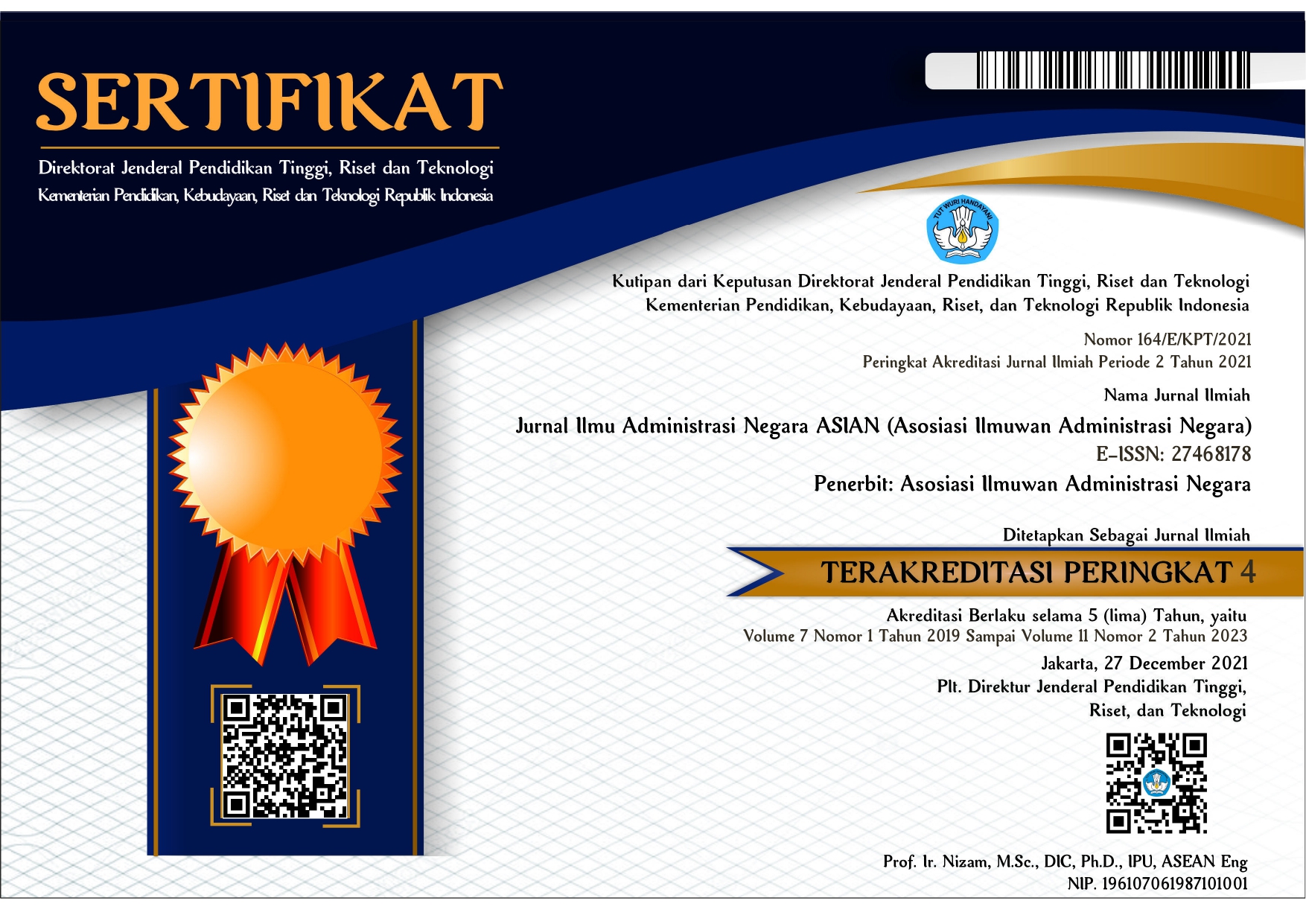Kolaborasi Triple Helix Dalam Pembangunan Wisata Bahari di Indonesia
 Abstract views: 4565
,
Abstract views: 4565
,
 PDF downloads: 1504
PDF downloads: 1504
Abstract
Triple helix merupakan konsep kolaborasi yang mendukung dalam pembangunan wisata bahari melalui hubungan dua arah antara government,
business, dan academia. Peran government memiliki porsi yang lebih besar untuk mempersiapkan payung regulasi dalam perencanaan sektoral yang akan dilaksanakan oleh business dan academia. Penelitian ini digunakan metode kualitatif deskriptif bertujuan untuk mendeskripsikan secara jelas masalah penelitian tentang potensi kolaborasi triple helix serta implikasi bagi wisata bahari di Indonesia. Government berperan dalam menyediakan kerangka regulasi (RPJM dan Perda); business memberikan bantuan finansial dalam program CSR; sedangkan academia menyusun master plan pemberdayaan sekaligus menjadi fasilitator dalam lingkup kegiatan pengabdian kepada masyarakat.
Downloads
References
Baum, T., & Szivas, E. (2008). HRD in tourism: A role for government? Tourism Management, 29(4), 783-794.
Cano, J., Hernandez, R., & Ros, S. (2014). Distributed framework for electronic democracy in smart cities. Computer, 47(10), 65-71.
Creswell, J. W., & Creswell, J. D. (2017). Research design: Qualitative, quantitative, and mixed methods approaches: Sage publications.
Dimyati, M. (2018). Panduan Penelitian dan Pengabdian Kepada Masyarakat Edisi XII Tahun 2018 (XII ed.). Jakarta: Kementerian Riset, Teknologi, dan Pendidikan Tinggi.
Etzkowitz, H., & Leydesdorff, L. (2000). The dynamics of innovation: from National Systems and “Mode 2” to a Triple Helix of university– industry–government relations. Research Policy, 29(2), 109-
doi: https://doi.org/10.1016/S0048- 7333(99)00055-4
Hall, C. M. (2001). Trends in ocean and coastal tourism: the end of the last frontier? Ocean & coastal
management, 44(9-10), 601-618.
Honey, M., & Krantz, D. (2007). Global trends in coastal tourism: Center 31 on Ecotourism and Sustainable Development.
Hopkins, M. (2017). CSR and sustainability CSR and Sustainability (pp. 59-87): Routledge.
Ireland, F. (2005). A human resource development strategy for Irish tourism: competing through people. Failte Ireland, Dublin.
Lombardi, P., Giordano, S., Farouh, H., & Yousef, W. (2012). Modelling the smart city performance. Innovation: The European Journal of Social Science Research, 25(2), 137-149.
Odendaal, N. (2003). Information and communication technology and local governance: understanding the difference between cities in developed and emerging economies. Computers, Environment and UrbanSystems, 27(6), 585-607.
Orams, M. (2002). Marine tourism: development, impacts and management: Routledge.
Riley, M., Ladkin, A., & Szivas, E. (2002). Tourism employment: Analysis and planning (Vol. 6): Channel View Publications.
Sugiyono, M. P. K. (2013). Kualitatif, dan Kombinasi (Mixed Methods). Bandung: Alfabeta.
Sunaryo, B. (2013). Kebijakan Pengembangan Destinasi Pariwisata. Gava Media, Yogyakarta.
Webster, J., & Watson, R. T. (2002). Analyzing the past to prepare for the future: Writing a literature review. MIS quarterly, xiii-xxiii. http://www.disparda.baliprov.go.id, , diakses pada tanggal 10 Oktober 2018 jam 21.40 http://travel.kompas.com/read/2015/10/ 08/141600827/Kadispar.Raja.Ampat.Optimistis.Raih.18.000.Wisman, diakses pada tanggal 10 Oktober 2018 jam 21.42 https://en.wikipedia.org/wiki/Phi_Phi_I slands, diakses pada tanggal 10 Oktober 2018 jam 21.44 http://www.sabahtourism.com/sites/defa ult/files/visitor-jan-nov2015.pdf, diakses pada tanggal 10 Oktober 2018 jam 21.45
Copyright (c) 2019 Jurnal Ilmu Administrasi Negara ASIAN (Asosiasi Ilmuwan Administrasi Negara)

This work is licensed under a Creative Commons Attribution-ShareAlike 4.0 International License.
Authors who publish with this journal agree to the following terms:
1. Copyright on any article is retained by the author(s).
2. The author grants the journal, right of first publication with the work simultaneously licensed under a Creative Commons Attribution License that allows others to share the work with an acknowledgment of the work’s authorship and initial publication in this journal.
3. Authors are able to enter into separate, additional contractual arrangements for the non-exclusive distribution of the journal’s published version of the work (e.g., post it to an institutional repository or publish it in a book), with an acknowledgment of its initial publication in this journal.
4. Authors are permitted and encouraged to post their work online (e.g., in institutional repositories or on their website) prior to and during the submission process, as it can lead to productive exchanges, as well as earlier and greater citation of published work.
5. The article and any associated published material is distributed under the Creative Commons Attribution-ShareAlike 4.0 International License









